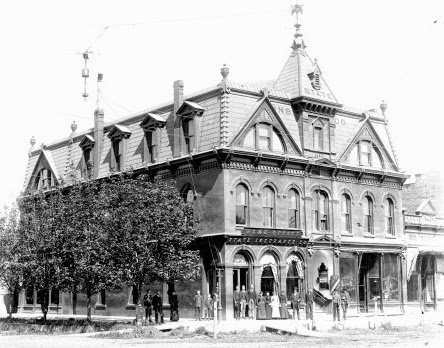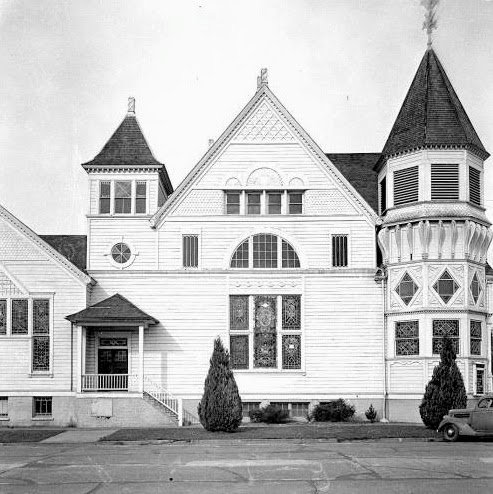World Events
- After the Hawaiian regent David Kalakaua dies, his sister Liliuokalani is proclaimed Queen of Hawaii. Her attempts draft a new Constitution and extend voting rights led to her overthrow by the U.S. within two years.
- Java Man, considered the “missing link” between apes and humans is discovered by Eugene Dubois. The fossils are at least 700,000 years old.
- In France, troops fire on a workers’ May Day demonstration in support of the 8-hour workday, killing 9 and wounding 30.
- New Scotland Yard becomes the HQ of the London Metropolitan Police.
- Croatian-born Nicola Telsa invents the Tesla Coil, a high voltage transformer. With Westinghouse, Telsa produced the electricity that lit the 1893 World’s Columbian Exhibition in Chicago.
- Edison exhibits his kinetoscope, creating an illusion of movement on film.
- In Coney Island, Jesse W. Reno patents the first escalator.
- Appearing this year in British magazines:” A Study in Scarlet”, by Conan Doyle and “The Light That Failed” by Rudyard Kipling. Also published in (in a censored and serialized version), “Tess of the d’Urbervilles: A Pure Woman Faithfully Presented” by Thomas Hardy.
In Salem
Willamette students at a YMCA Conference in Massachuse
When you visit
The YMCA moved out of the building in the following year and the building itself (the State Insurance Building) was demolished before 1948. In 1895 Brown convinced University trustees to build a gymnasium and it was used for basketball until it burned in 1921. After his death in 1958, the University dedicated a recreation area to Frank Brown.
Other events
- P. H. D’Arcy is elected mayor and will serve for two years.
- Fire destroys the interior of Waller Building at Willamette University. The photograph of that date shows men and women, all dressed formally (everyone in hats), watching smoke bellow from the roof.
- Two business establishments are constructed. The Burke Building just north of Ferry on Commercial Street, is significant as the location where the Salem Chamber of Commerce was organized in 1922. The Gray Building at the corner of State and Liberty (above), stands in one of our most important downtown locations. In the early 1900s, the Russell Catlin and James Lynn, merchants doing business together, bought the building. The present owners are descendants of Russell Catlin. (See these in the SHINE Downtown Walking Tour.)
- Two substantial farmhouses that had recently been built beyond the city limits are now Local Landmarks in the NEN neighborhood. The Pettygrew house at 587 Statesman Street was owned by that farming family from 1910 to 1939. It has retained its integrity for over a hundred years. The Matthews house at 2010 Nebraska Street was not so fortunate. Owned by that family for about 40 years, it had a number of subsequent owners and suffered many unfortunate alterations during the years it was modified into apartments. The current owners have restored it to its former dignity.
- The Strang House, on the southwest corner of Capitol and Leffelle Streets in the SCAN neighborhood, is somewhat of a mystery. Believed to be of this construction date, it was moved here from its original location on Front Street, in 1891 a typical Salem middle class residential neighborhood. It is likely to be the oldest house in the Gaiety Hill/Bush Pasture Park Historic Residential District. (It can be seen in the SHINE Gaiety Hill/Bush’s Pasture Park Walking Tour.)
- A “development” of three Simpson Cottages are built on Court Street on the block between 17th Street and Mill Creek. These are now part of the Court-Chemeketa Historic Residential District.
- Four miles southeast of Salem, a $50,000 institution, serving as a reformatory for boys was established as the Oregon State Training School. Inmates would be instructed in behavior and given military drill and discipline. By the 1920’s Salem’s city limits were closer to the Reform School and townspeople were alarmed by the city’s proximity and the relative ease of escape by its youthful inmates. A 1927 fire gutted the main building and the decision was made to relocate the facility to Woodburn, now the MacLaren Youth Correctional Facility.
- The North School is constructed this year. The name of this imposing building at Market (Garden Road) and North Winter Street was changed in 1908 to Grant School. It was razed in 1954 for the modern school building in that location today.
- The original First Baptist Church at Marion and Liberty Street is built in an elaborate style that includes a tower and turret, windows of various shapes decorated with stained glass, and a center section rising to a peak in two elevations. It was demolished in 1943.
- On August 5, a surprise undertow at North Beach (near the former Tioga, WA) took the lives of two members of a bathing party: Willie Steel and Nellie Boise. The tragic incident is reported at length in a newspaper article entitled, “A Cruel Ocean.” Miss Boise was the daughter of Salem Judge Reuben Boise.
- In December, F. S. Dearborn, a book seller on Commercial Street, offered Oregon wild flowers nicely presented and arranged in booklet form as a Christmas gift to be mailed.




2 Comments